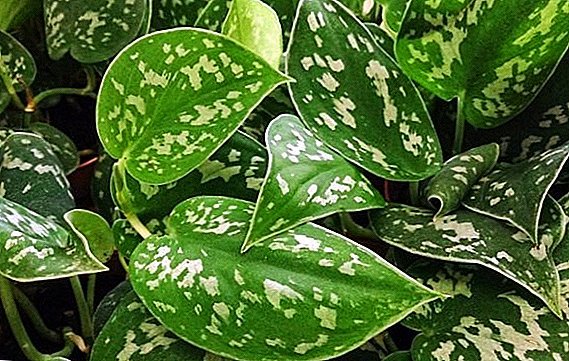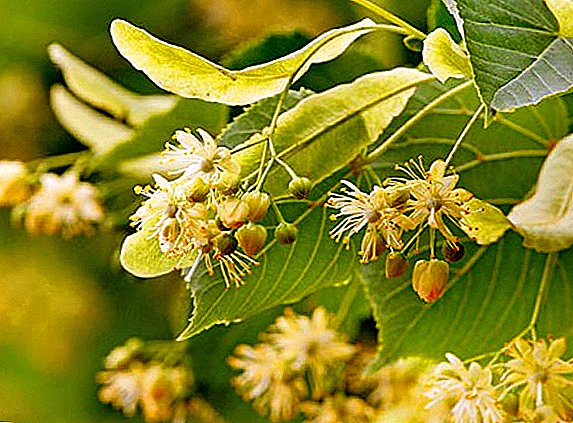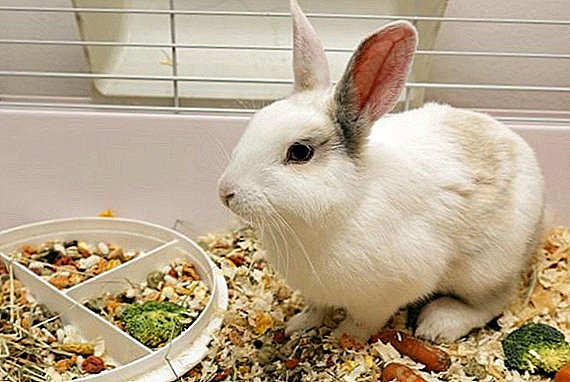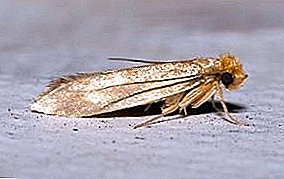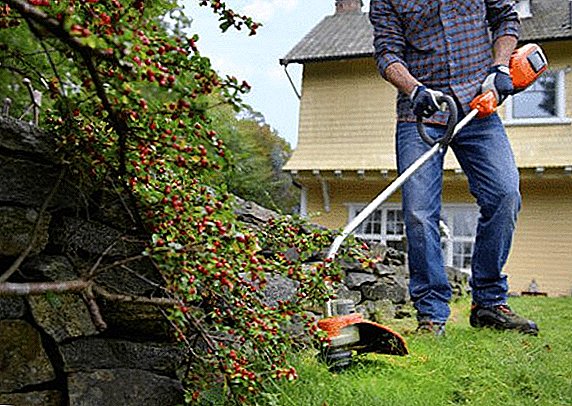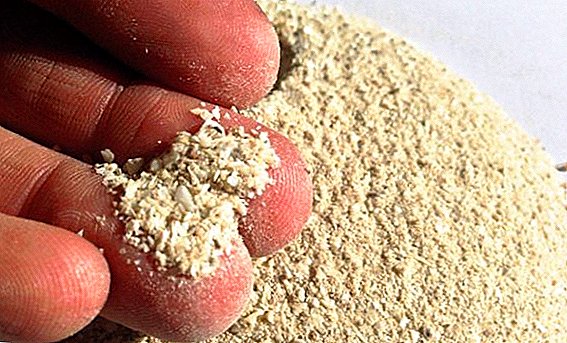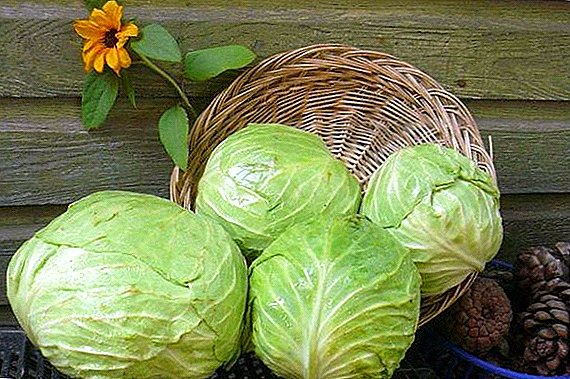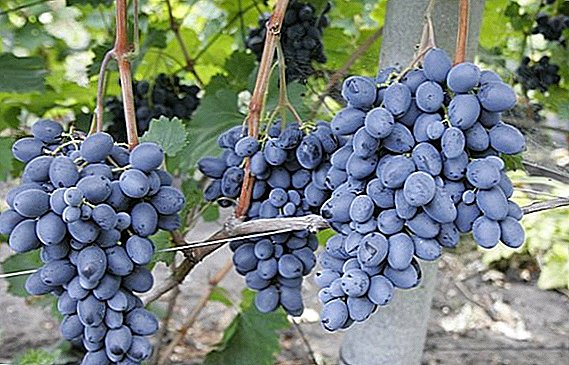 With the onset of autumn, grapes finally appear on the shelves of shops and markets. We all look forward to this time when you can fully enjoy the sweet taste and rich aroma of these juicy berries.
With the onset of autumn, grapes finally appear on the shelves of shops and markets. We all look forward to this time when you can fully enjoy the sweet taste and rich aroma of these juicy berries.
They delight us with their variety of varieties and types, which greatly expands the choice of buyers, however, confronts a difficult choice to people who decide to grow this delicacy in their garden.
In our article we will take a detailed look at the grapes, which is called "Buffet", learn all the characteristics and description of this relatively new variety, look at it in the photo and collect feedback from experienced growers about growing this plant.
In the future, this will help you decide on the choice of variety for planting in the country for yourself and your family.
Story
Buffet grapes are representative of the hybrid form. The history of its creation originates in the city of Zaporozhye, where local breeder Vitaly Vladimirovich Zagorulko brought it out by crossing two famous varieties: "Kuban" and "Gift Zaporozhye". By 2008, "Buffet" was already ready for implementation. 
Read also about such hybrid forms of grapes bred by the breeder V. Zagorulko: "Transformation", "Lily of the valley", "Libya", "Bazhena", "Ruslan".
Variety description
In terms of ripening of the crop, this species can be attributed to the early or early-medium varieties. For full maturity the berries need from 110 to 130 days, depending on the climate and weather conditions. That is, the harvest can be planned in mid-August.
Bushes differ from other representatives by their branching and growth force. They have a high level of shoot formation (up to 15 shoots per 1 m² often) and a well-developed root system. The leaves grow on them wide, curly, bright green. Flowers are formed bisexual.
The clusters usually have a conical shape and a mass of from 600 to 800 grams. They are distinguished by the abundance of densely growing, large, dark blue or purple, oblong berries. The skin on them is thin, dense, with a wax coating, which significantly improves the transportability of grapes.
The flesh is juicy, firm, has a rich sweet taste and a pleasant aroma. The aftertaste may remind of mulberry or raisins. The weight of one berry varies from 8 to 12 grams.
Did you know? The composition of grapes is very rich in vitamins. It includes more than 150 biologically active substances: proteins, fats, carbohydrates, dietary fiber, pectin, organic acids, trace elements such as iron, iodine, cobalt, manganese, copper, molybdenum, fluorine, zinc. Caloric content of 100 grams of this product is approximately 65 kcal. In medicine, there is even such a thing as "ampelotherapy" - treatment with grapes, its berries, leaves and wood.
Features of growing
Before you plant this grape in your garden and have the opportunity to feast on its harvest in any quantity, it is worth considering all the peculiarities of cultivation so that the plant grows healthy and prolific.
Lighting
Lighting plays a big role in the process of growing and forming grapes. Therefore, the area set aside for it should be as free as possible, have good access to sunlight, heat and air.
Soil requirements
When choosing a territory for planting, it is worth considering the condition of the soil. Black soil (loamy, sandy, etc.) is considered the most fertile, but marshy and saline soils are not suitable for growing these shrubs. 
Important! If you know that the groundwater level in the area designated for grapes is high, it is worth carrying out a thorough drainage to get rid of excess moisture.The roots of the vineyards grow well in loose soil, which allows water and air to flow freely. Also, pre-saturation of the soil with nutrients will not be superfluous, especially if it is poor.
Do not forget that the land for planting must be prepared in advance. If planting is planned for the fall, land should be prepared in the summer.
The site is cleared of weeds, various debris and stones, it is deeply dug up and loosened. It is advisable to keep the soil in this state until the fall, before the pits and trenches are organized in it.
Planting Buffet Grapes
We now turn directly to planting grapes on the site. Let us consider in detail all the steps and nuances of this process.
Selection of seedlings
 When choosing grapes, it is worth observing some rules:
When choosing grapes, it is worth observing some rules:
- Make a purchase in specialized stores where you can provide a certificate of quality goods. You should not buy the product in the markets from strangers.
- The roots of seedlings must be well developed, moist and protected from drying. If the root dries, nothing will save it.
- In the autumn, you should not buy woody seedlings, on which there are leaves. Because of them, the plant loses all its vitality.
- Acquire planting material is better in the temporary mass trade of grapes, that is, "in season". If you see that the plant is put up for sale much earlier than the deadline - it is better to refrain from buying. Most likely, the early maturation of the vine is caused by the use of chemical compounds and such grapes are mature only outside: it has few nutrients, it is poorly stored and rooted.
- The vaccination site should be clearly visible on the trunk.
- The appearance of the seedling must be attractive: it must be whole, without physical damage, flexible, alive and healthy looking.
Timing
The advantage of the Buffet grape is its frost resistance. The plant can be safely planted in the early spring, without fear of night frost. In general, the planting dates for this variety are rather stretched: they are planted from the first days of March until May. 
Important! When spring planting is better to plant "Buffet table" sooner than later. If you delay the process, it will adversely affect its survival rate, shorten the vegetation period and provoke weak plant growth.
There is also the possibility of planting a variety in the fall, which will increase its growing season. It is better to do this from late October to mid-November, taking care of the shelter and warming of seedlings for the winter, as well as sufficient soil moisture during direct planting.
Landing pattern
Since the Buffet grapes bushes are quite tall and voluminous, the rows should not be thickened much, so as not to hinder the penetration of the sun and air to the fruits. An ideal scheme for him would be 3x3 meters. This distance will allow the root system to develop unhindered, and the plant itself to feel comfortable. 
Did you know? If you sow parsley under the beds with grapes, it will help the bushes fight against garden pests and the grapes will grow more healthy and fruitful.
Grade Care
After the seedlings have been planted in the ground, it would be a mistake to assume that the work is done and now it remains only to wait for the berries to appear.
Buffet grapes collect a lot of feedback from experienced gardeners and they all hold the opinion that in order to get a rich, high-quality, tasty harvest, the plant should be monitored and looked after throughout its growth.
Watering
Immediately after planting, each seedling will require at least 20 liters of water. Since the grapes are very juicy, it is logical that in the process of growth they consume a lot of moisture. Watering is one of the most important components of quality vineyard care. You should advance, when choosing and preparing the site, to take care of the systematic, abundant and unimpeded irrigation of the plant and the land under it, especially in dry time.
Fertilizer
In the spring, before the bushes of grapes open, it is advisable to feed the soil with mineral fertilizers. For example, such a mixture: 200 grams of superphosphate per 100 grams of ammonium sulphate.
This will contribute to the rapid formation of inflorescences, ripening berries and high sugar content, as well as enhance growth and increase the yield of bushes.
Important! If in the fall the soil was fertilized with manure, there is no need for mineral fertilizers in the spring.
 In addition to mineral, your grapes will be happy and organic fertilizers. Here is an example of a useful organo-mineral fertilizer: 200 grams of superphosphate, 100 grams of ammonium sulphate and 700 grams of compost or rotted manure. This number is calculated for one bush.
In addition to mineral, your grapes will be happy and organic fertilizers. Here is an example of a useful organo-mineral fertilizer: 200 grams of superphosphate, 100 grams of ammonium sulphate and 700 grams of compost or rotted manure. This number is calculated for one bush.After fertilization, the soil should be abundantly moistened and loosened.
Pruning
In order not to overload the bushes, they should be regularly pruned. It is better to do this in the spring, before the juice runs along the shoots, so as not to provoke the "cry of the vine." The shoots are shortened by 5-8 eyes, the cut is left oblique, neat.
It is also worth getting rid of the roots that have sprouted from the ground to the top, and in some places to free the branches from the old dry bark. This should be done by hand or with a special brush, with great care.
How to protect grapes from diseases and pests
The "Buffet Reception" variety is less vulnerable to diseases and viruses than its "relatives". Its main enemies are fungal diseases: mildew, Alternaria, anthracnose and oidium.
To prevent damage, it is worth regularly treating with antifungal drugs and regularly inspect leaves and berries for infection. Here is a list of drugs that effectively fight grape diseases: Delan, Chorus, Collis, Topaz, Talendo, Tanoz, Quadris and others.  The most common pests that can infect your grapes are the following names: moths, felt mites, tsikadki and thrips. Effective drugs against them are "Bi-58", "Vertimek", "Calypso", "Avant", "Fastak", "Lannat 20L" and others.
The most common pests that can infect your grapes are the following names: moths, felt mites, tsikadki and thrips. Effective drugs against them are "Bi-58", "Vertimek", "Calypso", "Avant", "Fastak", "Lannat 20L" and others.
You can buy these drugs in special stores and use them in the future according to the attached instructions.
Do I need shelter for the winter?
As already stated above, the Buffet grape is distinguished by its frost resistance. It grows well at temperatures up to -22 ° C. If in your region winter is not cruel and the temperature does not fall below this figure, then you do not need to worry about sheltering your grapes for the winter - it will comfortably spend the winter in the fresh air.
If you live in a region where there are severe frosts and the thermometer rolls over -22 ° C, then, bend your vineyard shoots to the soil and cover with black foil, paper or plastic sacking, then sprinkle with earth. So you save grapes until spring.
The advantages and disadvantages of the variety
The advantages of the described varieties include the following:
- excellent frost resistance;
- the harvest is perfectly preserved during transportation;
- pronounced taste and aroma of ripe berries;
- high yield level due to bi-hollow flowering;
- ripening of the vine along the entire length of the shoot;
- resistance to certain diseases.
 Now, knowing how to grow this delicacy in your garden, many of you, for sure, will want to become its owners. We wish you a rich, tasty, fragrant harvest and let its cultivation bring you only pleasure.
Now, knowing how to grow this delicacy in your garden, many of you, for sure, will want to become its owners. We wish you a rich, tasty, fragrant harvest and let its cultivation bring you only pleasure.

